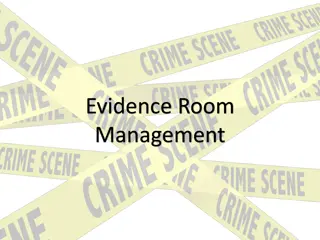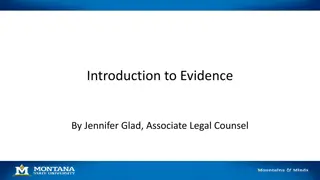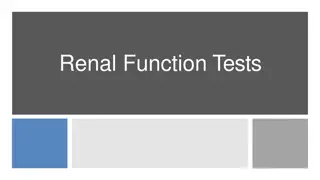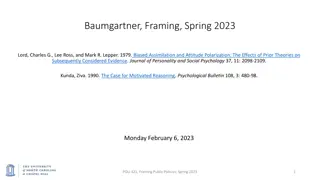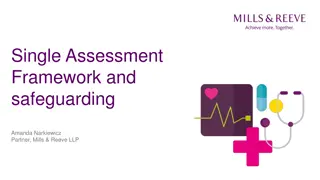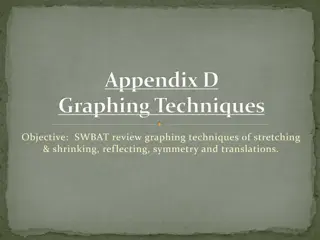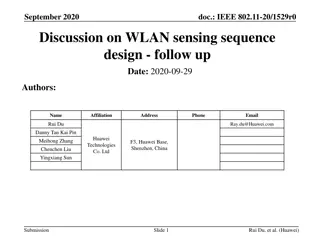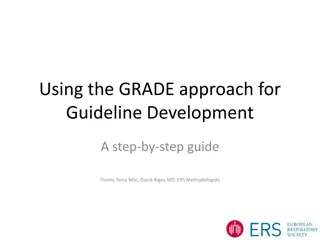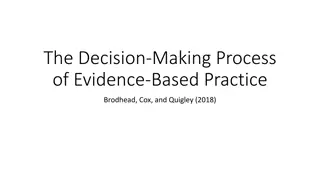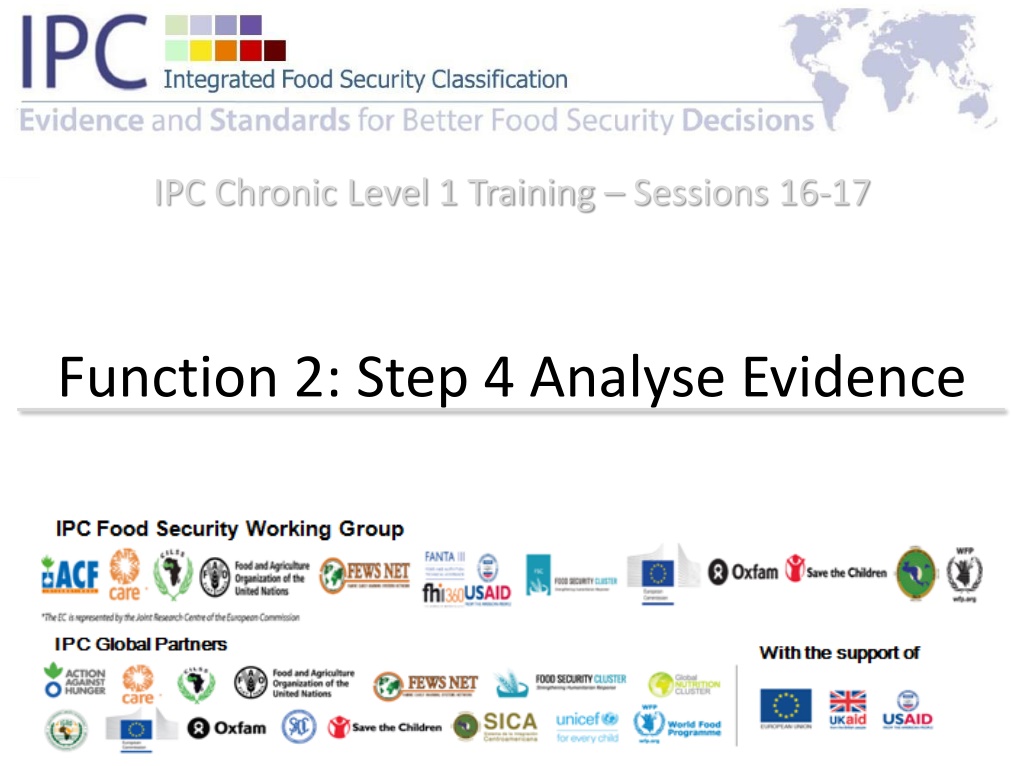
Step 4: Analyzing Evidence for Food Security Assessment
Explore the importance and process of Step 4 in analyzing evidence for food security assessment. Learn how to use tools and frameworks to formulate evidence statements, assign reliability scores, and evaluate the quality of analysis to ensure transparency in classification.
Download Presentation

Please find below an Image/Link to download the presentation.
The content on the website is provided AS IS for your information and personal use only. It may not be sold, licensed, or shared on other websites without obtaining consent from the author. If you encounter any issues during the download, it is possible that the publisher has removed the file from their server.
You are allowed to download the files provided on this website for personal or commercial use, subject to the condition that they are used lawfully. All files are the property of their respective owners.
The content on the website is provided AS IS for your information and personal use only. It may not be sold, licensed, or shared on other websites without obtaining consent from the author.
E N D
Presentation Transcript
IPC Chronic Level 1 Training Sessions 16-17 Function 2: Step 4 Analyse Evidence IPC Food Security Working Group IPC Global Partners
Learning Objectives Explain the purpose and importance of Step 4: Analyse Evidence Utilize the Analysis Worksheet, Reference Table, and Analytical Framework to: Formulate evidence statements and conclusions for each food security element Assign % of HHs in each Level for Outcomes and Underlying/Causal Factors Utilize the IPC guidance to assign Reliability Scores 2
Step 4: Importance Documents and organizes evidence to facilitate complex analysis and ensure transparency Links raw evidence with indicative Level. Evidence is then converged to assign Level classification Evaluates reliability of each piece of evidence, ensuring quality of analysis 3
STEP 4: Tool (Step 4 of Analysis Worksheet) 4
Step 4: Organization of Tool Organized as per Analytical Framework and Reference Table: Contributing Factors Underlying/Causal factors Food Availability, Access, Utilization & Stability Outcomes Food Consumption (Quality and Quantity) Nutrition 5
Step 4: Procedures - The Four Key Tasks 1. Identify percentage of HHs under each evidence cut-off for each contributing factor and outcome element and assign DC, Year and Reliability Scores 2. Analyze and converge evidence for each FS element 3. For outcomeelements and direct evidence on causal factors only, determine indicative conclusion 6
Task 1: Identify % of HHs under each evidence cut-off for each contributing factor and outcome element and assign DC, Year and Reliability Scores a. Write evidence statements: From sources and raw evidence inserted in Step 2 Include direct & indirect evidence 7
Task 1: Identify % of HHs under each evidence cut-off for each contributing factor and outcome element and assign DC, Year and Reliability Scores a. Write evidence statements b. Specify DC to link to Step 2 8
Task 1: Identify % of HHs under each evidence cut-off for each contributing factor and outcome element and assign DC, Year and Reliability Scores a. Write evidence statements b. Specify DC to link to Step 2 c. Assign Reliability Score 9
How to Assign Reliability Scores Reliability: The trustworthiness of the piece of evidence Evidence that is not considered at least Somewhat Reliable can be analysed, but can not support classification or population estimates The number of Somewhat Reliable and Reliable pieces of evidence will be used to assign Evidence Level of analysis 10
Task 2: Analyze and converge evidence for each FS outcome element From evidence statements Analyze evidence statements then formulate brief convergence for each element to a convergence statement 11
For outcomeelements and direct evidence on causal factors only, determine indicative Conclusion From evidence statements Analyze convergence of evidence then formulate conclusions for each food security outcome element and direct evidence on causal factors Conclusion statements for outcomes should include direct and indirect evidence related to that element plus any relevant evidence from contributing factors to a conclusion statement IPC Learning Programme 12
A side note on... Inference of Outcomes Inference of Evidence Inference Defined: A conclusion reached on the basis of evidence and reasoning. Logical deduction. 3 ways to infer Outcomes from indirect evidence: - Interpret: Contributing Factors within their context - Calibrate: Other measures of Outcomes not included in the Reference Table. - Extrapolate: Evidence over space, scale and time 13
Interpret: Contributing Factors within their context Requires critical thinking: On livelihood systems (following the IPC Analytical Framework) how do households get their food and income? So called livelihood based analysis How are shocks or ongoing conditions present likely to affect different groups? E.g. Urban middle and high class Urban areas Urban poor High food prices Rural middle and high class Rural areas Rural poor 14
Calibrate: Other measures of Outcomes not included in the Reference Table Those collected using varying methods found to be locally appropriate IPC is open and encourages any potential evidence Analysts need to approximate other measures to the IPC Level and outcome descriptions. Simplified Example of Inferring Outcomes based on calibrating other measures of Outcomes 1: Understand the IPC Chronic Ref. Table 2: Understand the cut-offs or values for specific indirect indicators 3: Calibrate indirect evidence to IPC Reference Tables Level 1 Level 2 Level 3 Level 4 Moz Dietary Quality Index 6 to 7.5 > 7.5 > 7.5 < 6 15
Extrapolate: Evidence over Space, Scale and Time Refers to data collected for larger or smaller areas, groups or different times Analysts need to contextualize evidence, make assumptions and interpret their meaning for outcomes Best done through statistical analysis during pre-analysis period Examples of Indirect Evidence for different scales, groups and times Analysts need to think in terms of How is the sub-area/situation different from the one presented? FCS for a Province was borderline , but analysts are only classifying an district. Does evidence from contributing factors and other outcomes show that the studied sub-area/ situation is likely to be worse or better than one presented? If yes, to what extent? HDDS was taken from a survey carried out after harvest but IPC Ref Table sets cut-offs for lean season Expenditure patterns were examined during an exceptional year 16
Analyze Evidence for Tambai Exercise 16.1 Task: With your Group... 1. Fill in the missing information in Step 4 of Tambai s worksheet, focusing only on: Writing or completing evidence statements Completing the missing Reliability Scores for each piece of evidence Completing the missing Documentation Code that links the evidence statement to the source in the evidence repository. Reaching element conclusions Reaching FS Outcome conclusions 17
Wrap-up Do you feel you can... Explain the purpose and importance of Step 4 - Analyzing Evidence Utilize the Analysis Worksheet, Reference Table, and Analytical Framework to formulate evidence statements and conclusions for each food security element Utilize the IPC guidance to assign Reliability Scores 18





